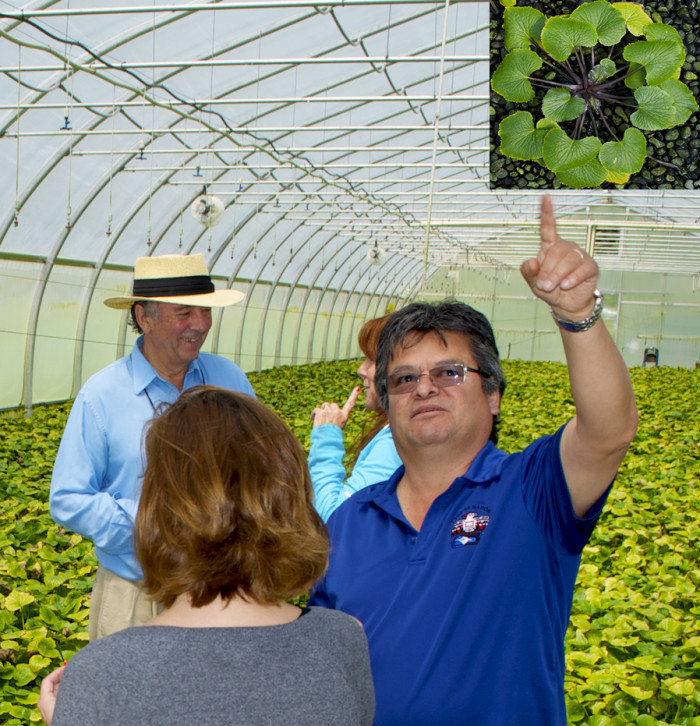Hot News for T’Sou-ke
The first harvest of 15,000 wasabi plants will take place near the end of August at T’Sou-ke First Nation.
As The Sentinel reported in its July 2014 issue:
Chief Gordon Planes steps into one of three large greenhouses, carpeted with bright green wasabi plants. The plants are being sprayed with a thick fog of cool, nutrient-infused mist, meant to simulate the climate of Japanese mountains.
After a winter’s growing, under plastic and shade cloth, and the stress of this summer’s heat, the wasabi will be harvested. Its tangy and delicious leaves and the root, famous as a sushi condiment, will be delivered to grocery stores and restaurants.
And the lessons learned from the wasabi will be put to good use as planting takes place again in the greenhouses near the main highway into Sooke.
It’s all part of a $300,000 investment by the forward-looking T’Sou-ke people who are achieving their vision of food and energy security along with economic and cultural sustainability for the nation.
That’s in evidence by the shellfish and other seafood harvest that is taking place as well as by the 440 rooftop photovoltaic solar panels that feed into the BC Hydro grid. Solar hot serves many homes. Meanwhile, the T’Sou-ke ocean-going canoe has just returned home from a Tribal Journey to Ahousaht near Tofino.
But all attention later this month will be on the wasabi harvest. Revenue generated from the harvest will play a big part in investments into other initiatives and services for the nation.
There are great expectations for the T’Sou-ke wasabi, selling for consumers attracted by its medicinal qualities. The plants have anti-inflammatory, anti-microbial, anti-platelet and anti-cancer effects, but the scarcity of the plant means it is not in wide use.




